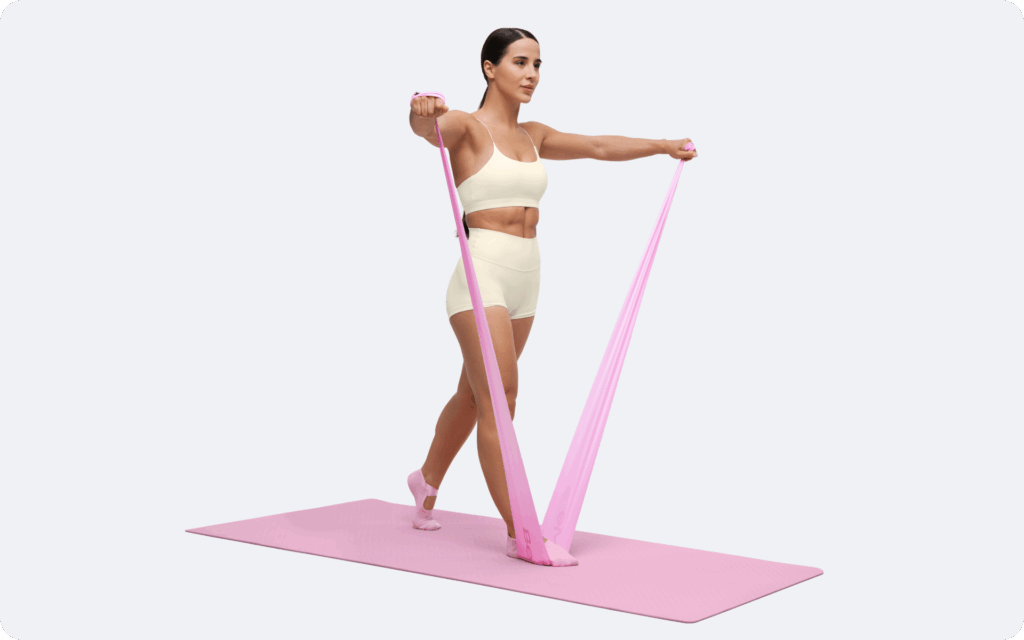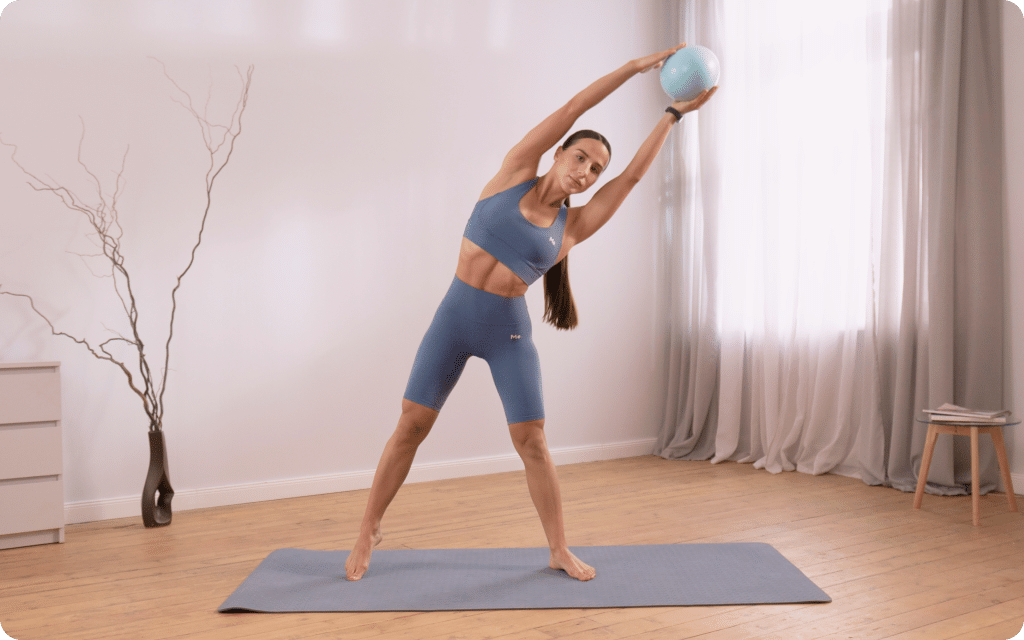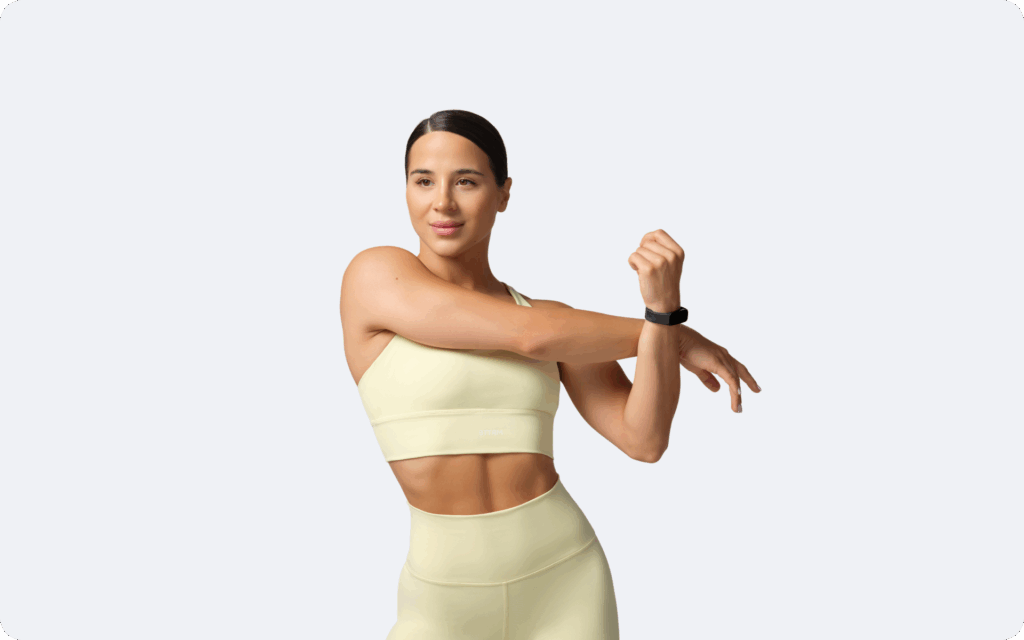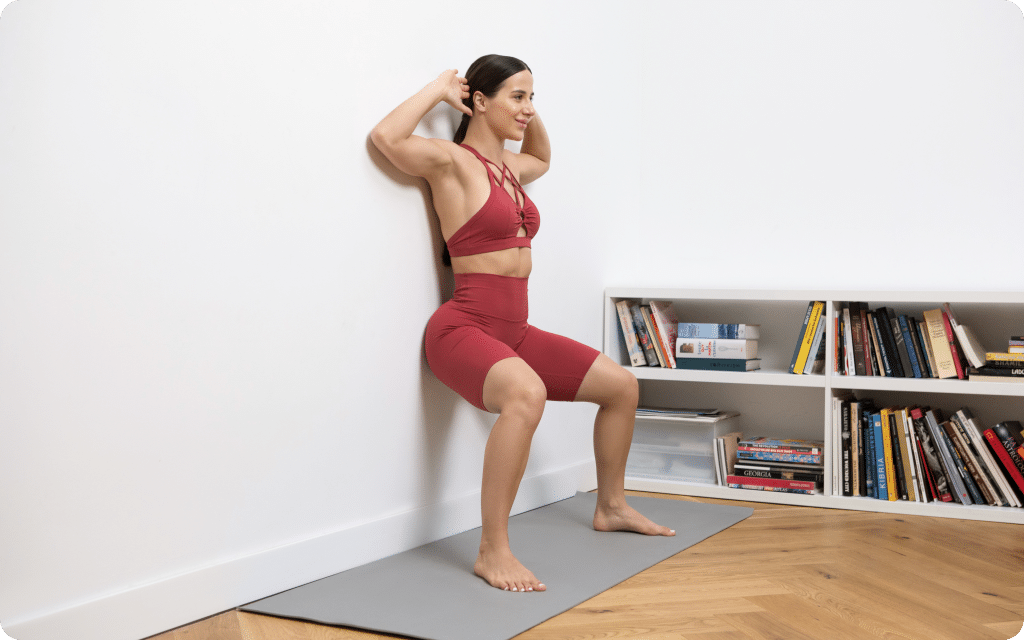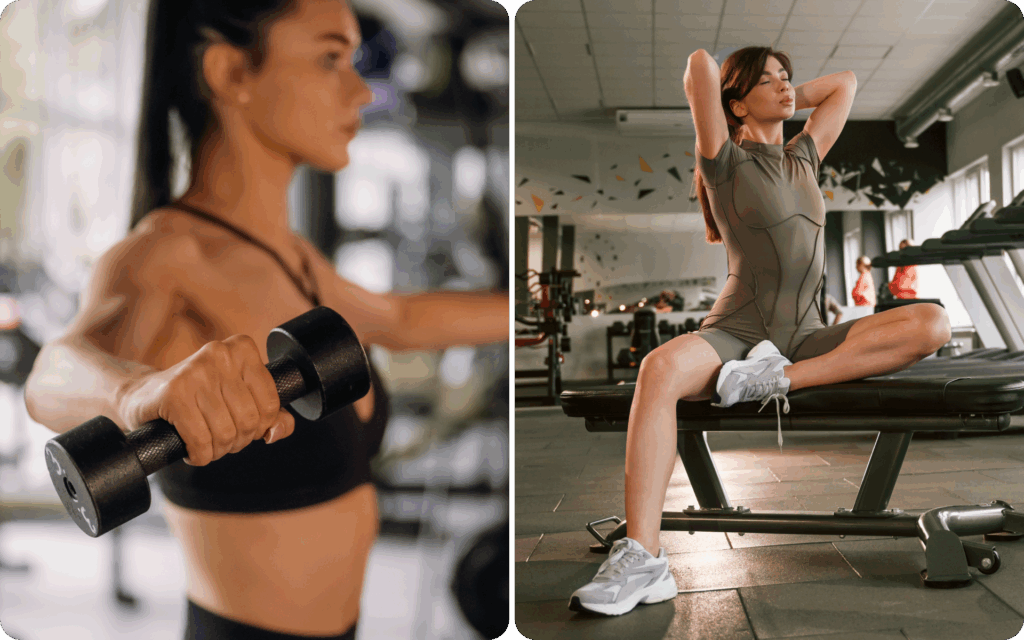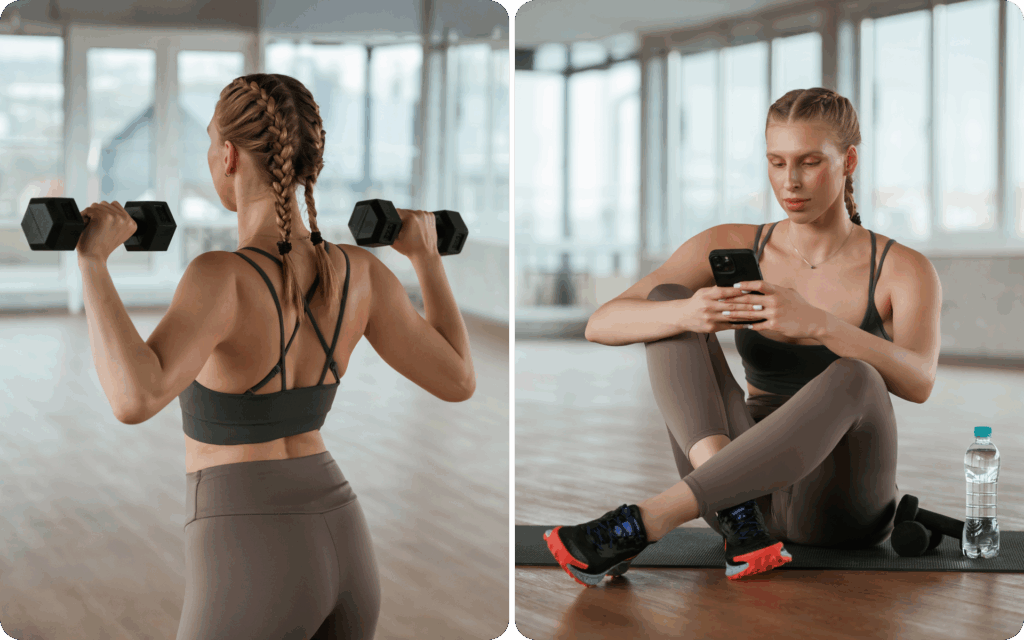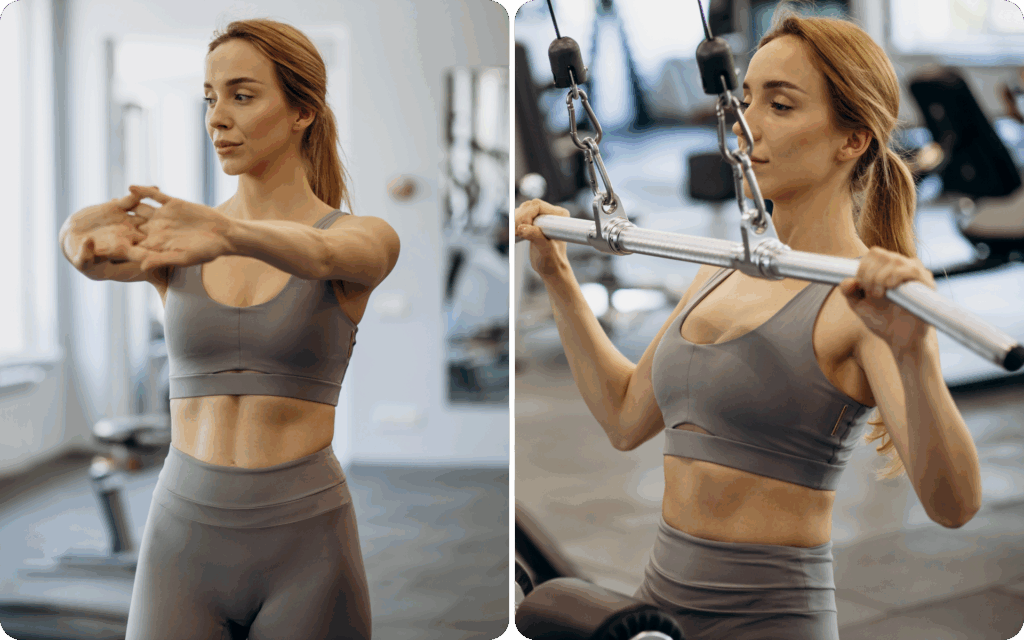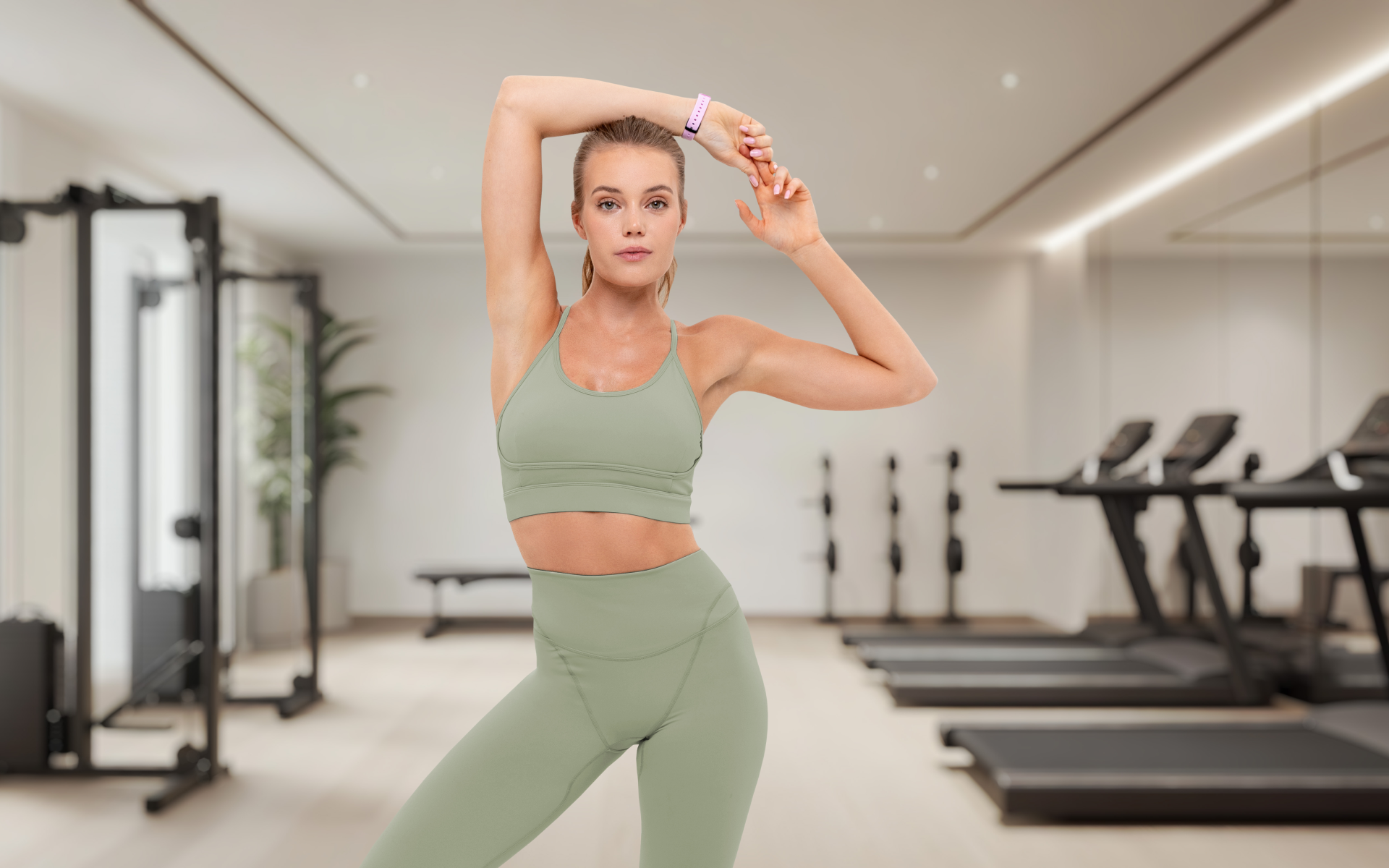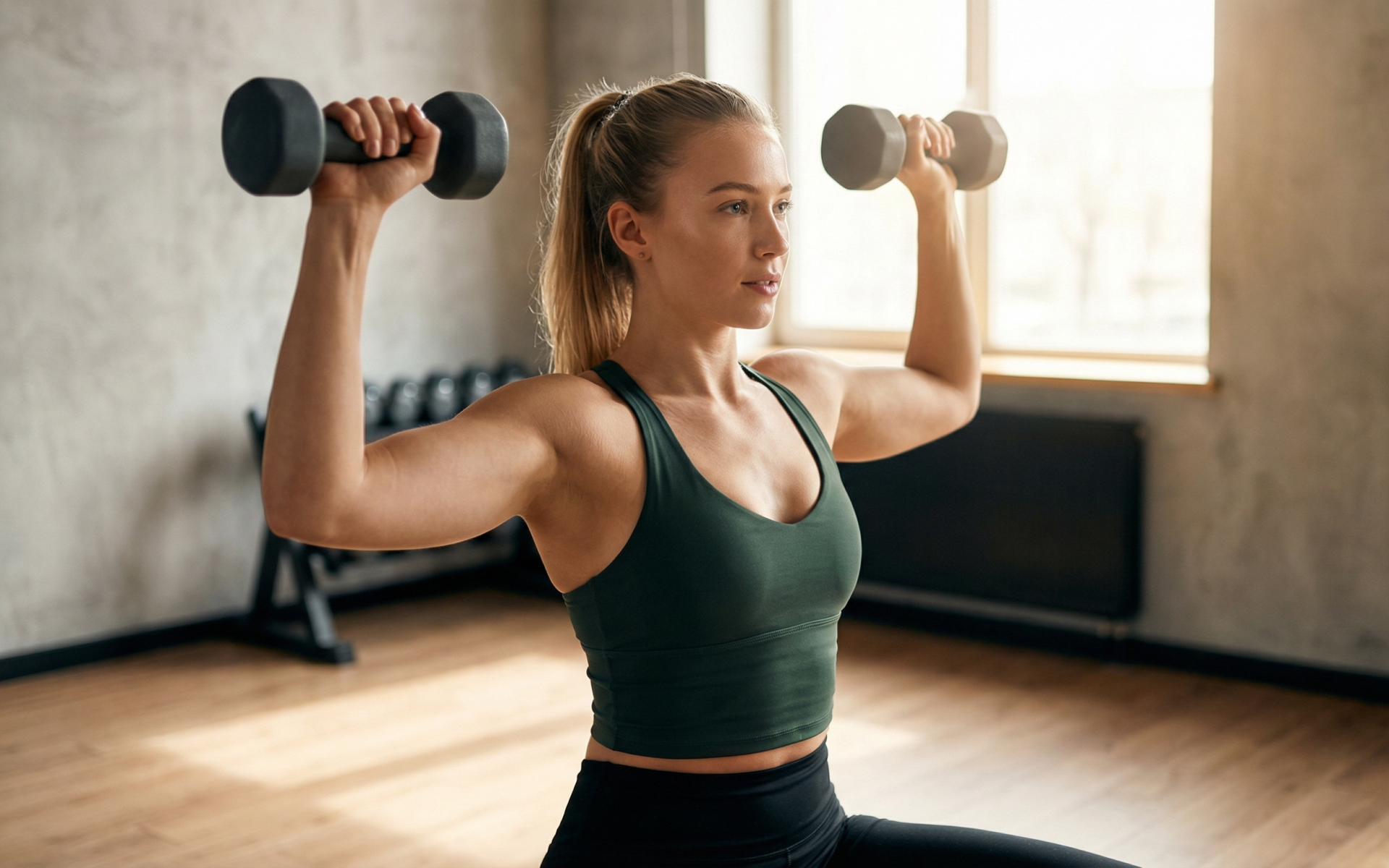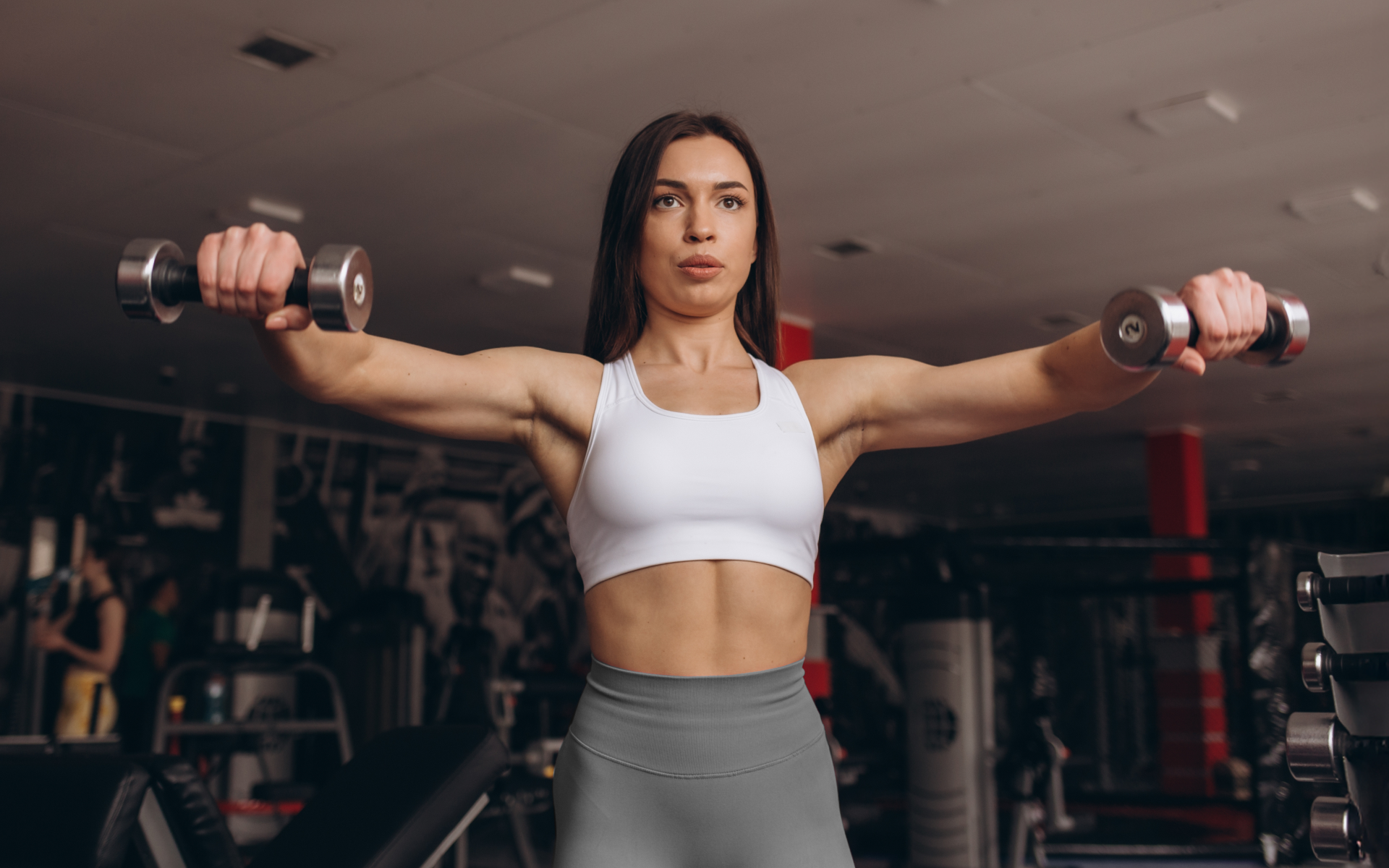As one of the most versatile muscle groups, the shoulders are involved in almost every upper-body movement, from lifting and pushing to stabilizing during complex exercises. In addition to aesthetics, well-developed shoulders contribute to better posture, improved athletic performance, and reduced risk of injury in daily activities and sports.
This guide is designed to provide a clear, science-backed roadmap for beginners who are looking to strengthen and grow their shoulder muscles.
From understanding the anatomy of the shoulder to mastering foundational exercises and avoiding common pitfalls, you’ll find everything you need to train smarter, not harder.
Is It Difficult to Build Shoulders?
Building strong, well-defined shoulders can be challenging, but not impossible. The difficulty can be attributed to the unique anatomy and function of the shoulder muscles.
The deltoid, which is the primary muscle group of the shoulder, is made up of three distinct heads:
- Anterior (front)
- Lateral (side)
- Posterior (rear)
Each head requires targeted exercises to develop evenly, which means a well-rounded shoulder workout plan must include a variety of movements (1).
In addition, the shoulders are smaller muscles compared to larger groups such as the chest or legs, so they naturally have less potential for rapid growth. They also play a stabilizing role in many upper-body exercises, which can lead to fatigue before they’re fully stimulated (2).
This makes it essential to train them with intention and proper technique to see progress.
Read more: 6 Solid Exercises for a Biceps and Triceps Gym Workout
Why Do Shoulders Grow So Slowly?
The slow growth of shoulder muscles may result from several factors:
- High Usage in Daily Activities
The shoulders are constantly engaged in everyday movements, from lifting objects to stabilizing during other exercises. This frequent use means they’re already accustomed to low levels of stress, so a more focused effort is required to stimulate growth (3).
- Smaller Muscle Fibers
Compared to larger muscle groups, the deltoids have a smaller cross-sectional area (4). This limits their capacity for hypertrophy (muscle growth) and makes progress more gradual.
- Recovery Demands
As the shoulders are involved in so many compound movements (such as bench presses and pull-ups), they often don’t get adequate recovery time. Overtraining or insufficient rest can hinder growth (5).
- Form and Technique
Shoulders are highly mobile, but they’re also prone to injury. Poor form or excessive weight can lead to strain, which slows progress and can set you back with injuries (6).
Understanding these challenges is the first step to overcoming skinny shoulders – they don’t have to be a lifelong struggle. By focusing on proper form, balanced training, and adequate recovery, you can set realistic expectations and build stronger, healthier shoulders over time.
Whether you’re a workout beast or just a beginner making your first foray into the world of fitness and dieting – BetterMe has a lot to offer to both newbies and experts! Install the app and experience the versatility first-hand!
How to Grow Bigger Shoulders
By understanding the anatomical, physiological, and neurological factors that contribute to shoulder growth, you’re setting yourself up for efficient, sustainable progress.
Here’s what you need to know to grow bigger shoulders:
Understanding Shoulder Anatomy
The shoulder is a complex joint that’s designed for a wide range of motion. The primary muscle responsible for the rounded contour of the shoulder is the deltoid, which consists of three distinct heads (7):
- Anterior Deltoid (Front): Drives forward and overhead movements, such as front raises and presses.
- Lateral Deltoid (Side): In addition to helping with overhead pressing, they’re responsible for arm abduction, which is crucial for width and rounded appearance, and can be targeted with lateral raises.
- Posterior Deltoid (Rear): Supports pulling and rearward motion, which are key for posture and balanced development, and can be activated by reverse flyes and rows. They are also involved with overhead pressing.
Supporting muscles, which include the rotator cuff group, provide stability and shouldn’t be overlooked in a balanced program. Our previous post goes into great detail about the full shoulder workout.
Exercise Selection: Targeting All Angles
Effective shoulder growth requires a variety of exercises that engage each deltoid head:
- Compound Presses: Overhead presses (dumbbell, barbell, or machine variations) involve all the deltoid heads and recruit stabilizers.
- Isolation Moves: Lateral raises and front raises offer precise targeting of the anterior and lateral heads.
- Rear Delt Focus: Face pulls, reverse flyes, and rear delt rows activate the posterior head while also enhancing shoulder health.
- Rotator Cuff Work: External and internal rotation exercises guard against injury and promote long-term joint integrity.
A balanced routine ensures that no section of the shoulder is neglected, which reduces the risk of muscular imbalances and associated injuries.
The Principle of Progressive Overload
Muscle hypertrophy, the process of muscle growth, requires consistent and gradually increasing stimulus (8):
- Increase Resistance: Add weight as your strength improves.
- Manipulate Volume: Use higher reps, more sets, or advanced techniques such as pause reps to challenge the muscles differently.
- Track Progress: Log your lifts, reps, and sets to ensure you’re making steady gains over time.
Progressive overload should always be paired with proper form. Prioritizing quality movement over heavy lifting will reduce the risk of injury and ensure optimal muscle activation.
The Role of Recovery and Neurobiology
Muscles grow outside the gym, not during training. Adequate recovery is just as important as the workout itself:
- Sleep: Deep, consistent sleep supports muscle repair and growth hormone release (9).
- Active Recovery: Gentle movement (walking, stretching, mobility drills) helps circulation without overtaxing muscles (10).
- Nutrition: Sufficient protein (1.6-2.0g/kg) provides the building blocks for repair when balanced with carbohydrates and healthy fats (11).
- Neuroplasticity: Consistent practice builds muscle and neural connections, which makes movement patterns more efficient and resilient over time (12).
Due to their frequent involvement in other lifts and daily use, shoulder muscles require mindful scheduling and sufficient rest to maximize progress and prevent overuse injuries.
Mind-Muscle Connection and Technique
The brain’s role in movement cannot be overstated. Developing body awareness – “feeling” the working muscle during each rep – improves activation and reinforces proper technique (13):
- Focus on Muscle Engagement: Visualize and concentrate on the target head during each exercise.
- Controlled Tempo: Move with purpose, avoiding the urge to rush through sets for more effective stimulation.
- Regular Assessment: Record your workouts, form, and recovery so you can continually refine your approach.
Common Mistakes and How to Avoid Them
Even well-intentioned training can stall your progress or increase your risk of injury. Be aware of these frequent pitfalls:
- Neglecting Rear Delts: Imbalanced training that favors the front and side heads can lead to poor posture and shoulder pain.
- Lifting Too Heavy, Too Soon: Using excessive weight compromises form and elevates the risk of injury, particularly due to the mobility of the shoulder.
- Insufficient Warm-up: Cold muscles are more prone to strain – dynamic mobility and light warm-up sets are essential before heavy lifts.
- Poor Movement Quality: Allowing momentum instead of muscle control reduces effectiveness – prioritize slow, controlled movement.
- Ignoring Pain Signals: Sharp or lingering pain (not muscle fatigue) is a sign that you need to rest and reassess technique or programming.
Read more: Is The 8-Hour Arm Workout Worth a Try for Muscle Growth?
What Is a Solid Shoulder Workout Plan?
An effective shoulder workout plan is structured to target all three heads of the deltoid – the anterior (front), lateral (side), and posterior (rear) – in addition to the surrounding stabilizing muscles, which include the rotator cuff and upper back. Balance, variety, and progressive overload are key components for muscular development and joint health.
A well-rounded program should include:
- Compound Movements: Exercises that recruit multiple muscle groups and stimulate overall strength, such as overhead presses.
- Isolation Exercises: Movements focused on one deltoid head or supporting muscle at a time, which allows for balanced development.
- Rotator Cuff Care: Accessory movements that maintain shoulder stability and resilience.
- Volume and Frequency: 2 shoulder-specific workouts per week with 2-4 exercises, with 2-5 sets per exercise and 8-15 repetitions per set, is sustainable and supports growth for most beginners.
- Progressive Overload: Gradually increasing the weight, number of reps, or intensity over weeks to consistently challenge the muscle.
Sample Beginner Shoulder Workout
- Warm-Up (5-10 minutes)
- Arm circles (30 seconds in each direction)
- Band pull-aparts (2 sets x 15 reps)
- Scapular wall slides (2 sets x 10 reps)
- Seated Dumbbell Overhead Press
Primary focus: Anterior and lateral deltoids
3 sets x 8-12 reps
- Dumbbell Lateral Raise
Primary focus: Lateral deltoids
3 sets x 10-15 reps
- Bent-Over Reverse Fly
Primary focus: Posterior deltoids and upper back
3 sets x 12-15 reps
- Front Raise (Dumbbell or Plate)
Primary focus: Anterior deltoids
2-3 sets x 10-12 reps
If you’re curious about the shoulder workout with dumbbells, check out our earlier article.
- External Rotation with Resistance Band
Primary focus: Rotator cuff and shoulder stability
2-3 sets x 15 reps each arm
- Cool-Down and Mobility Work
- Gentle shoulder stretches
- Deep breathing or foam rolling, if necessary
Key Considerations:
- Prioritize controlled form over heavy loads, particularly during the early stages.
- Allow 48-72 hours between shoulder workouts to support recovery.
- Adjust the weight and volume based on your individual progress and recovery capacity.
- Incorporate rest days and listen to your body – shoulder joint health is equally as important as muscle gains.
This structure will ensure comprehensive development, helping you build strength, size, and resilience in the shoulders while minimizing the risk of injury.
Reasons why BetterMe is a safe bet: a wide range of calorie-blasting workouts, finger-licking recipes, 24/7 support, challenges that’ll keep you on your best game, and that just scratches the surface! Start using our app and watch the magic happen.
Is Working the Shoulders 3 Times a Week Too Much?
The question of optimal frequency often arises when a program for shoulder growth is being structured. Training the shoulders three times a week can be effective for some, but the right frequency will depend on several important factors:
- Individual recovery capacity
- Total weekly training volume
- Exercise selection
- The workout split you’re using
Muscle growth is stimulated by challenging the muscles and then allowing time for recovery and adaptation. For most beginners and intermediates, 2-3 sessions per week is generally safe (14), as long as the overall shoulder volume (total sets and reps) remains moderate across the week.
Exceeding this without adequate recovery can increase the risk of overuse injuries, particularly as the shoulders are engaged in many pressing and pulling exercises throughout a typical week.
Another consideration is quality over quantity. If you opt for three sessions, spread them out with at least one full rest or lower-body training day in between.
Ultimately, shoulders can be trained three times a week if you:
- Monitor for signs of overtraining, such as persistent soreness, joint discomfort, or declining performance.
- Adjust the load and volume so each session is productive, not exhaustive.
- Balance shoulder work with adequate pushing and pulling for posture and joint health.
Prioritize exercise variety, don’t repeat identical routines each session, and include rotator cuff or rear delt work to protect shoulder integrity. Furthermore, you can try these bodyweight shoulder workouts for an equipment-free way to build strong, defined shoulders.
By prioritizing exercise variety, we mean that you should do three different sessions a week and rotate through them over the course of 3-6 months. Studies have shown that using variation in such a structured manner can induce fuller hypertrophy (15).
Always listen to your body and adapt your approach as required. Consistent progress and joint health should take precedence over rigid frequency targets.
For most beginners and intermediates, one dedicated shoulder day per week – combined with indirect work from pressing and pulling movements – can be effective for growth and strength, as long as training volume and intensity are sufficient. Well-developed shoulders, particularly the lateral deltoids, create width and definition, which will enhance the overall appearance of your arms and upper body. Individuals with a mesomorphic body type naturally tend to have broader shoulders and a more muscular frame, but all body types can develop strong shoulders through resistance training. Muscle growth rates can vary based on fiber composition. In a study carried out among elite bodybuilders, Type IIx (fast-twitch) fibers demonstrated a remarkable +76% hypertrophy, which indicates that muscles rich in fast-twitch fibers may experience more significant growth under intense training (16). This suggests that the growth potential of a muscle is influenced by its size and its fiber type, with fast-twitch-dominant muscles potentially responding more dramatically to training stimuli.Frequently Asked Questions
Is 1 shoulder day enough?
Do developed shoulders make your arms look bigger?
Which body type has big shoulders?
Which muscle grows the fastest?
The Bottom Line
A successful shoulder workout plan requires more than just lifting weights, it’s about understanding the unique anatomy of your shoulders, choosing exercises that target all three deltoid heads, and balancing your training volume with proper recovery.
In this article, we’ve explored the challenges and intricacies of shoulder growth, laid out a structured approach to programming, and addressed common questions based on current science and practical experience.
By consistently applying these evidence-based strategies, you’ll build stronger and more defined shoulders, support joint health, reduce injury risk, and create a foundation for continued progress on your fitness journey.
DISCLAIMER:
This article is intended for general informational purposes only and does not serve to address individual circumstances. It is not a substitute for professional advice or help and should not be relied on for making any kind of decision-making. Any action taken as a direct or indirect result of the information in this article is entirely at your own risk and is your sole responsibility.
BetterMe, its content staff, and its medical advisors accept no responsibility for inaccuracies, errors, misstatements, inconsistencies, or omissions and specifically disclaim any liability, loss or risk, personal, professional or otherwise, which may be incurred as a consequence, directly or indirectly, of the use and/or application of any content.
You should always seek the advice of your physician or other qualified health provider with any questions you may have regarding a medical condition or your specific situation. Never disregard professional medical advice or delay seeking it because of BetterMe content. If you suspect or think you may have a medical emergency, call your doctor.
SOURCES:
- Shoulder Muscles (2021, my.clevelandclinic.org)
- Dynamic Stabilisers of the Shoulder Complex (n.d., physio-pedia.com)
- Neuromuscular shoulder activity during exercises with different combinations of stable and unstable weight mass (2020, bmcsportsscimedrehabil.biomedcentral.com)
- Comprehensive morphometric assessment of deltoid muscle development in children: A cross-sectional study (2022, thelancet.com)
- Intramuscular mechanisms of overtraining (2020, pmc.ncbi.nlm.nih.gov)
- Diagnosis, prevention and treatment of common shoulder injuries in sport: grading the evidence – a statement paper commissioned by the Danish Society of Sports Physical Therapy (DSSF) (2022, bjsm.bmj.com)
- Anatomy, Shoulder and Upper Limb, Shoulder (2023, ncbi.nlm.nih.gov)
- Effects of Resistance Training Overload Progression Protocols on Strength and Muscle Mass (2024, pubmed.ncbi.nlm.nih.gov)
- Effect of changes in sleeping behavior on skeletal muscle and fat mass: a retrospective cohort study (2023, pubmed.ncbi.nlm.nih.gov)
- A Systematic Review on the Effectiveness of Active Recovery Interventions on Athletic Performance of Professional-, Collegiate-, and Competitive-Level Adult Athletes (2019, journals.lww.com)
- Editorial: Nutritional Strategies to Promote Muscle Mass and Function Across the Health Span (2020, frontiersin.org)
- Adaptations to Endurance and Strength Training (2018, pmc.ncbi.nlm.nih.gov)
- Importance of mind-muscle connection during progressive resistance training (2015, link.springer.com)
- A Systematic Review of The Effects of Different Resistance Training Volumes on Muscle Hypertrophy (2022, pmc.ncbi.nlm.nih.gov)
- Nonuniform Response of Skeletal Muscle to Heavy Resistance Training (2000, journals.lww.com)
- Skeletal muscle hypertrophy and structure and function of skeletal muscle fibres in male body builders (2005, pmc.ncbi.nlm.nih.gov)

